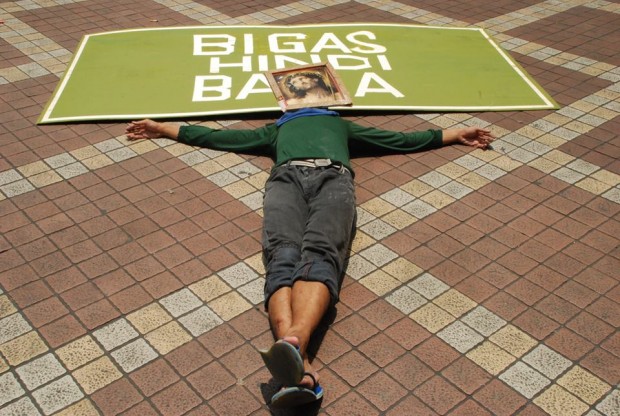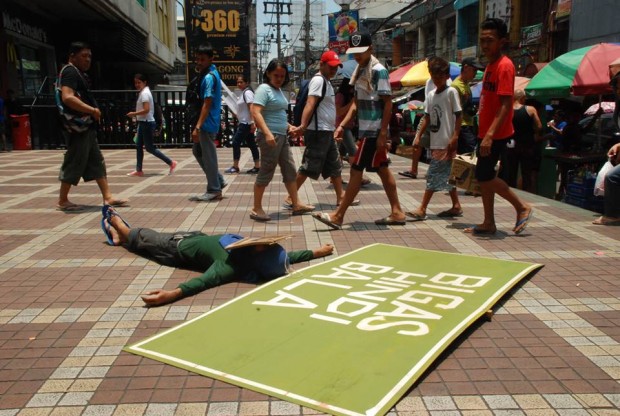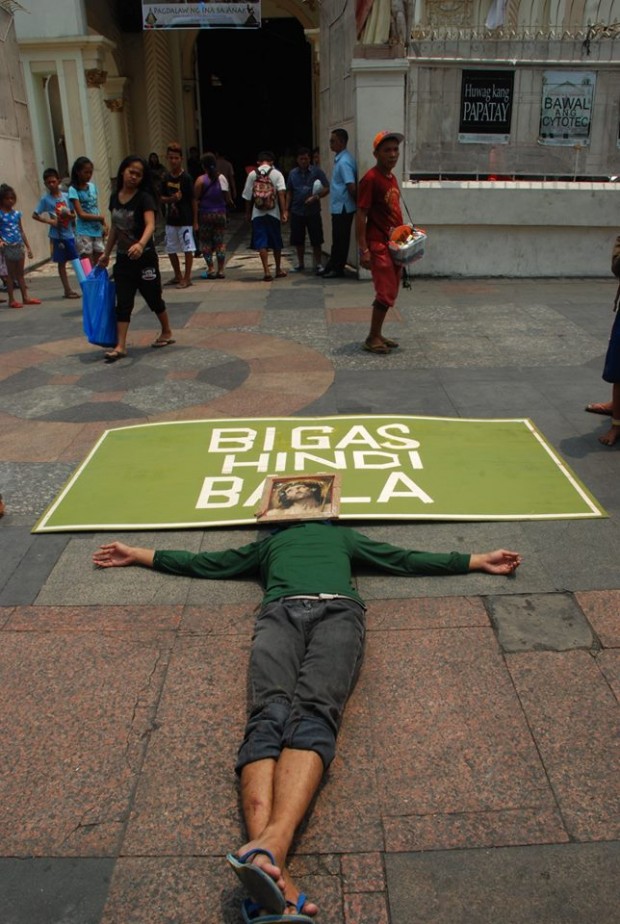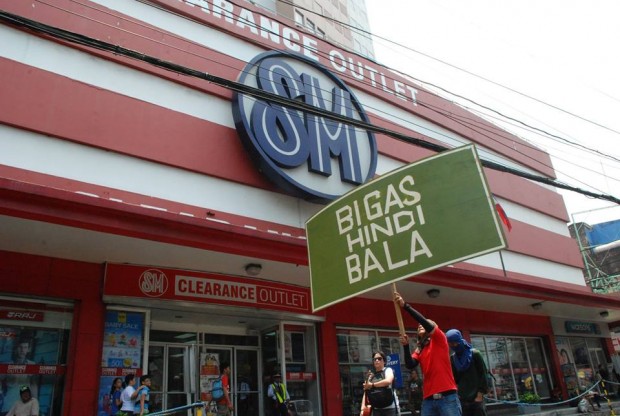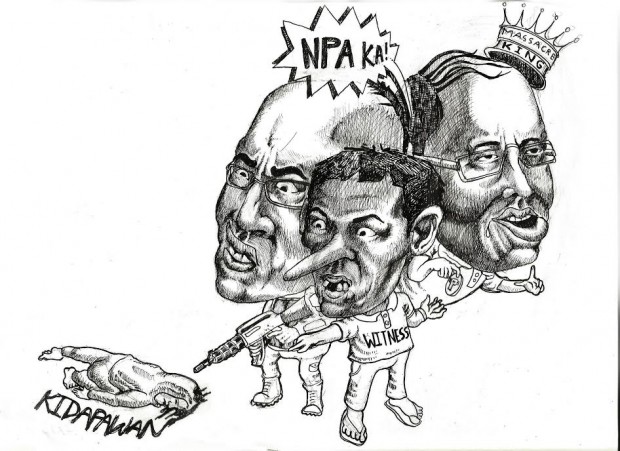(Photo by Kilab Multimedia)
Streetwise
Last week’s killing, wounding and illegal arrest of drought-stricken farmers who barricaded the Davao-Cotobato highway to dramatize their demands has brought to national attention the harsh realities in the country’s rural areas.
It highlighted the desperate straits of the majority of rural folk especially the peasantry. Poor farmers including indigenous people eke out a living subject to the vagaries of nature; utilizing backward means of production; tied to exploitative tenant-landlord relations; reliant on a usurious lending system; forced to sell their produce at low farm-gate prices; and under threat of displacement by mining operations, plantations and other “development projects”.
Extreme weather disturbances that have become the new normal as a result of climate change have hit poor farmers hard whether these be typhoons, flooding, drought or infestation by pests.
To top it all, their lives and livelihood are made even more precarious by ongoing counterinsurgency operations to contain the New People’s Army and, in Muslim Mindanao, Moro rebel forces. More often than not, these end up disrupting civilian communities that the military suspects to be providing aid and succor to the “enemy”.
With failed harvests, mounting debts and hungry mouths to feed, farmers in North Cotobato decided to take their appeals for support to the provincial capital rather than wait in vain for help to come to them. Their demands were legitimate: immediate release of 15,000 sacks of rice; release of calamity funds; raise farm-gate prices of their produce; stop militarization of the countryside.
But the governor turned a deaf ear to the farmers’ demands and instead sicced the police on the protesters. Not content with mowing them down with gunfire, beating them, and making scores of arbitrary arrests, the police as well as military laid siege to a Methodist Church compound where the protesters took refuge. They turned off the electricity and threatened to charge church leaders for giving sanctuary to so-called criminals. They conducted a search of the compound but came up empty-handed.
The authorities prevented human rights workers from rescuing the blockaded protesters, attending to the wounded, aiding the arrested and locating hundreds unaccounted for. They conducted unauthorized autopsies on the two persons killed and falsely claimed they did not die from gunshot wounds. They bulldozed the scene of the massacre and wantonly destroyed the protesters’ belongings left behind in the melee.
Even before a proper investigation had been undertaken, the police involved in the brutal dispersal of the protesters were awarded medals of recognition while the arrested and several individuals tagged as protest leaders were criminally charged for the violent outcome. They have been presenting false witnesses against the protesters to the mass media.
As news of the Kidapawan massacre trickled out, the plaintive call “bigas hindi bala” and the demand for justice for the victims of gross human rights violations resonated among the broad public. People could not understand why hungry farmers could not be treated with compassion by concerned government officials. Why were their appeals and demands met with indifference, their protest action met with harshness and eventually armed suppression. Where did government calamity funds go? What had the Department of Agriculture done to mitigate the effects of El Niño? Where was President Aquino and what did he have to say?
People were indignant that rice sacks donated by private individuals and groups were being prevented by North Cotobato Governor Taliño-Mendoza from reaching the farmers. People rejected her wild accusations that a presidential candidate, in cahoots with her political opponents as well as with “militant leftists” had “instigated” the protest action to make the government look bad.
Agriculture Secretary Alcala’s attempt to minimize the severity of the drought in North Cotobato and to claim that government had done what it could to help the farmers was met with disbelief. Reports that the National Food Authority had more than enough rice stocks and was even in the process of selling these at a loss to rice distributors who in turn would make a huge profit were met with suspicion that corrupt deals were being made at the expense of calamity-hit farmers.
Amidst denunciations that President Aquino and his officials are incompetent, have little concern for the farmers’ plight and have the propensity to resort to state violence in dealing with crises, Malacañang slowly put together it’s counter attack.
First, that the protesting farmers were the aggressors. They provoked the police. They were also armed. They had been infiltrated by the New People’s Army. Too bad for the Aquino regime, despite attempts at a cover-up, video footage and eyewitness accounts clearly show the police attacking the protesters.
Second, that the farmers were deceived by the protest organizers. They were told they would be given rice if they joined the protest. How is it then that the farmers stayed for two and a half days under the scorching sun even as the police threatened them through a blaring sound system that they would be arrested if they did not leave? Why did it take a violent dispersal by the police to break their ranks?
Third, that the organizations of the militant Left were leading the protest because ordinary farmers could not have mobilized in such numbers by themselves. This explains why the demands were political like putting a stop to the militarization of the countryside. Now why does Malacañang assume that farmers are incapable of analyzing their situation and connecting socio-economic demands with political demands? Why do Aquino apologists assume that ordinary people are incapable of getting organized and fighting for their interests against government neglect and bad policies?
Pseudo-progressive parties like Akbayan who are part and parcel of the Aquino regime and anti-communist pseudo-intellectuals who pretend to know the inner workings of the communist movement provide the most absurd argument. They say that protest organizers are communist agitators themselves who have a hidden agenda which has nothing to do with alleviating the hunger of the farmers but everything to do with bringing down the government.
They say that is the reason the protesters would not peacefully disperse despite the entreaties of the police. According to this line, the Kidapawan massacre is part of the Left’s strategy and tactics, deliberately intended to spill the blood of farmers, enrage the public and consequently heap the blame on government. This convoluted argument falls flat on its face since it entails the Leftists’ unbelievable capacity to manipulate not only the protesting farmers but also the actuations of both civilian authorities and state security forces.
Calls for an independent investigation into the Kidapawan Massacre, the immediate release of those arrested and the dropping of all charges, the suspension and prosecution of those responsible and indemnification for those killed and wounded must be pursued without let-up in the face of the Aquino regime’s whitewash marked by repeated falsehoods, intrigues, red-baiting and media manipulation. #
Published In Business World
11 April 2016

